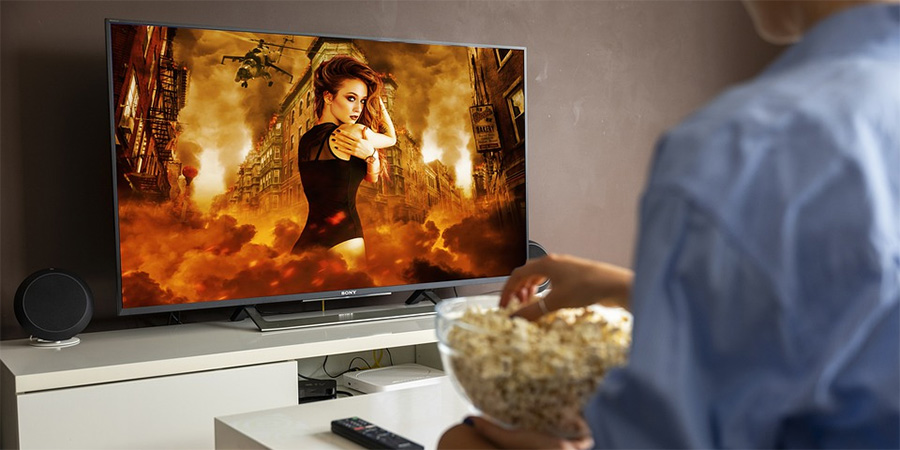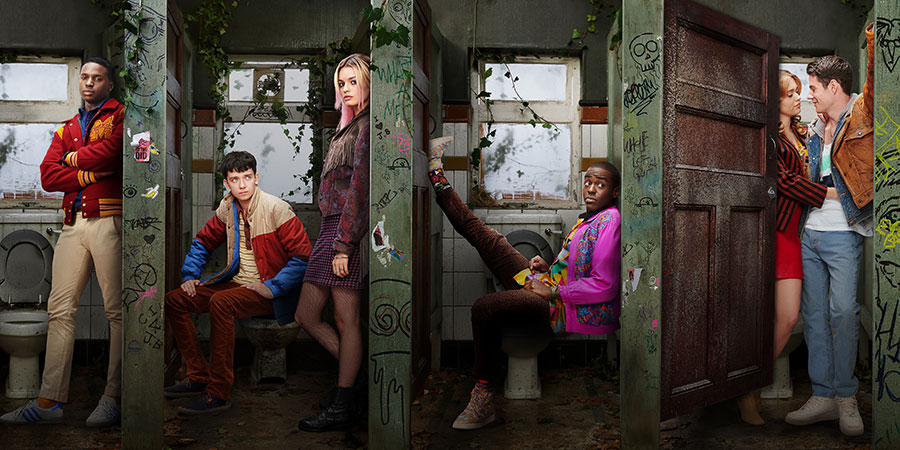Why has the number of people that watch TV online grown considerably lately?

Did you know that the average person in the UK spends almost six hours daily watching TV or online video, according to media regulator Ofcom? Moreover, the average on-screen time increased by over an hour in the last three years. There is certainly a lot of new comedy on TV at the moment.
On-demand video and streaming services such as iPlayer and Netflix have changed the media landscape, and traditional TV companies had to adapt. New services contributed to the increase of audience, and many viewers now turn to online TV watching... for example, you can't see Ricky Gervais sitcom After Life via a traditional broadcast television channel.
Changing TV habits
Watching TV was a passive activity that relied on what programme broadcasters prepared, but with the emergence of on-demand streaming services, the habits of many consumers have changed. Perhaps you've already binge-watched all of Series of The Outlaws via iPlayer, even though only a couple of episodes have been broadcast on BBC One so far. The BBC recently revealed Starstruck has been streamed over 8 million times... that's more than watched it via BBC Three.
Researchers found that live TV still gains the single largest share among TV viewers, but it's not always through TV sets and antennas. With innovative services like BBC iPlayer and All 4 from Channel 4, broadcasters are fighting their upstart streaming opponents, especially since cord cutting has never been easier.
How digital changed the entertainment landscape
For broadcasters, the move to digital has had multiple layers. New digital signals enabled higher resolution programmes to be made and shown, whilst other efforts utilising new digital technologies have been behind the scenes, notably in trying to adapt traditional TV to viewers' changing habits, influenced by an increasing number of streaming options.
The interconnectedness of modern society through the internet also had a significant impact, and not just on television. Gaming was perhaps the first sector of the entertainment industries to pivot towards the benefits an internet connection offered. First, the iGaming companies used technologies advancements to improve gaming graphics, and then they went online, offering players the opportunity to connect directly with others. From simple online games in the beginning, there are now impressive graphics such as those found in live casino games, and multiplayer shoot-em-up game experiences.
Music, similarly, saw significant digital disruption. First, they went from vinyl and CD to mp3, and now there are a proliferation of streaming services awash with millions of tracks, each available in an instant. Now music is highly available and very cheap, with listeners paying a handful of pounds' monthly subscription for access to 70+ million songs. It's quite different from buying a single CD and investing in your hi-fi collection.
Streaming services pushed the audience towards online TV
According to the latest research, almost 60% of UK homes have at least one paid streaming service. Whether you watch Netflix or Amazon or listen to Spotify music streaming, you have a massive library of content at your disposal. TV shows that were highly anticipated on the weekly TV schedule are now available for bingeing at any moment day or night, and a number of hit shows - for example Sex Education - are only available online via paid-for platforms (Netflix, in that case).

The availability and convenience of an online TV library has played part in driving large numbers of people to switch from traditional linear viewing. Even established TV companies realised how critical online streaming platforms are, and you can find mobile viewing apps for the most famous European TV broadcasters.
While it is hard to compete with the deep pockets of the likes of Netflix, Amazon Prime, and Disney+ and their premium content, national broadcasters still have immense strengths. For example, local news, sporting events, documentaries and miniseries all retain a significant audience... as does comedy of course!
Online viewing of TV programmes
Many premium TV programmes are now streamed online, but whilst this can be more accessible for viewers, it can also be more troublesome for advertisers. What is the measurement tool for online viewership? Since traditional TV ratings have dropped, it's essential to figure out how to get exact numbers, but each service measures its data differently, and guards its metrics with high secrecy.
Monitoring how much people watch something is not only essential for marketing purposes. TV channels also use viewership share as crucial input on which shows to recommission, and which don't have much of a future with audiences.
As we mentioned, traditional TV broadcasters rely more on online TV via their own streaming services. The convenience, availability, and on-demand options are something users enjoy.
However, social networks are also of increasing importance. Combining elements of both streaming platform and social network, YouTube is a perfect target for sharing smaller bits of popular shows, and it is regularly utilised to share mid-length teasers, helping bring audiences to subscription-based platforms to watch full programmes and series. Channels such as UKTV Dave even publish some comedy shows exclusively to their social media channels.
Facebook is still the most powerful single social media service, and TikTok is becoming more prominent each day; both are similarly excellent mediums for promoting and watching parts of TV broadcasts or highlights and drawing an audience towards full-length programmes. You'll find extras from the likes of panel show Hypothetical on there.
The future of scheduled programming
With so many streaming services, viewers can get overwhelmed. Have you ever turned on Netflix or Disney+ and just browsed for minutes, before leaving the platform without watching anything?
There is value in scheduled programming, and effective TV schedulers who know their audience can still attract a vast audience. The real future of television is probably in hybrid solutions, mixing classic and online TV viewing. Broadcasters may have to implement a more immersive experience like participation in the most popular shows. VR technology is increasingly mature and could be key, but has yet to break through to mainstream audiences. Still, it is something TV producers should think about in the future. Could we see a VR panel show one day?
As time goes on, TV will surely become more personalised and, just like watching lists on streaming services, maybe online television distribution will show a viewer only the things they will like.
